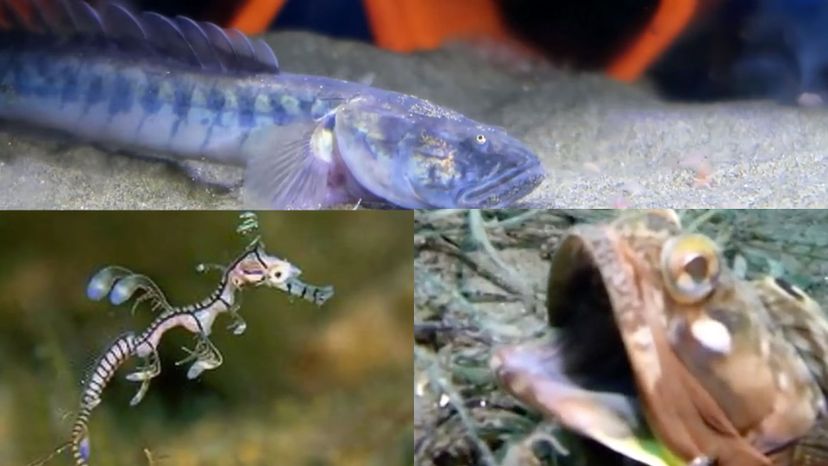
Image: Youtube
About This Quiz
Legends and mythology from ancient times are full of monsters from the sea, from serpents to dragons, mermaids and sirens, and hydras and other hybrid creatures. But even without those in our stories, our oceans are full of sea creatures, some monstrously large, others monstrously scary, and still some a mystery to us. Is your soul longing for the secret of the sea? See how many of these sea creatures -- from pretty little clownfish to menacing deep-sea dwellers -- you can name.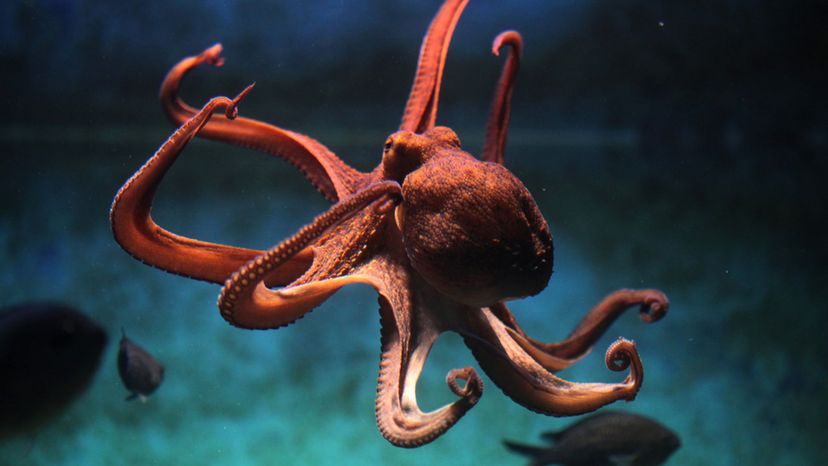
shutterstock
Which ocean-dwelling animal is this?
Anchovy
Anemone
Barnacle
Octopus
You know them by their tell-tale eight arms. But did you know that octopuses have three hearts, blue blood, and no bones? In general, they are between one and three feet long -- the largest typically grow to 16 feet, while the smallest are smaller than an inch long.
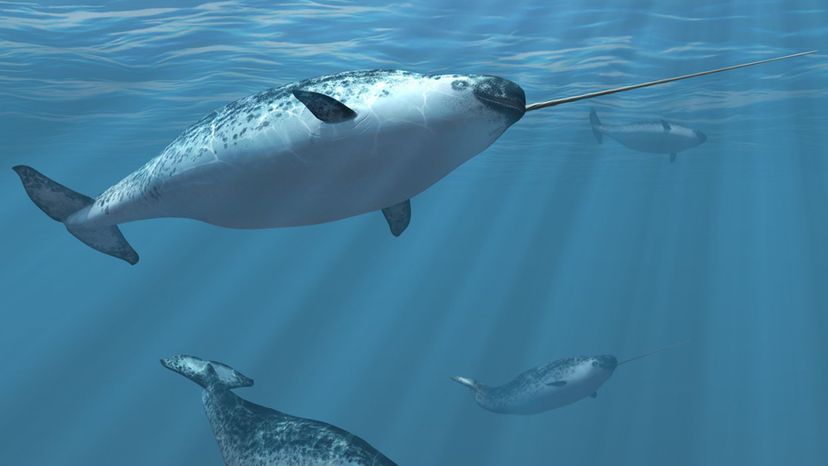
shutterstock
Which ocean-dwelling animal is this?
Goblin shark
Narwhal
The narwhal, because of its 8-foot-long swordlike tusk (it's really a tooth), is known as the "unicorn of the sea." All males of the species have tusks, but only 15 percent of females do -- and scientists aren't yet sure why that is, or what purpose the tusk serves.
Swordfish
Unicorn
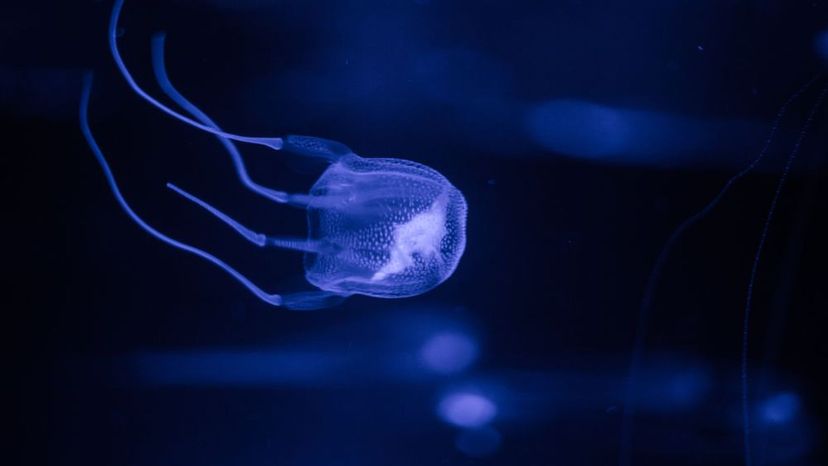
Shutterstock
Which ocean-dwelling animal is this?
Barracuda
Beluga whale
Frilled shark
Jellyfish
Jellyfish have been around so long they pre-date the dinosaurs by as much as 400 million years or so. They don't live very long, though. Most jellies survive between a few hours and a few months, although one species has the ability to regenerate its cells, making it potentially immortal.
Advertisement
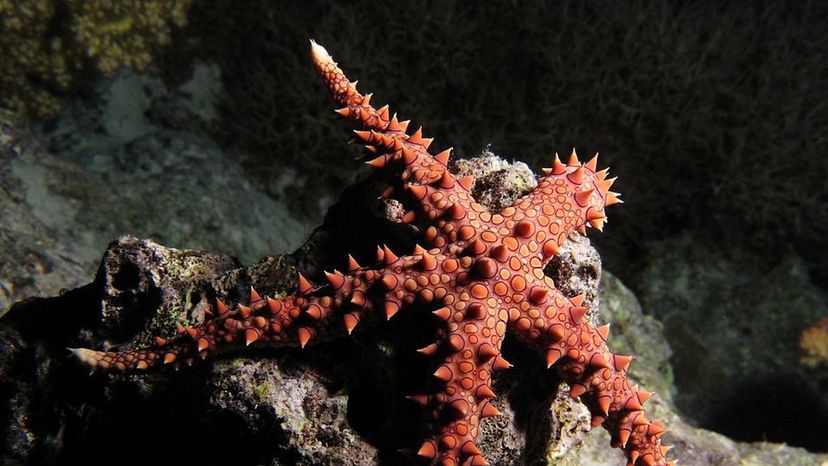
Alexander Vasenin
Which ocean-dwelling animal is this?
Conch
Dolphin
Starfish
Five-arm starfish are the most common among the 2,000 species, although there are starfish with 10, 20, or even 40 arms. They, in fact, may be most well-known for their ability to regenerate those limbs (and, in some types, entire bodies). Also called a sea star, this invertebrate isn't a fish -- it's actually closely related to sea urchins, sponges, and sand dollars.
Vampire squid
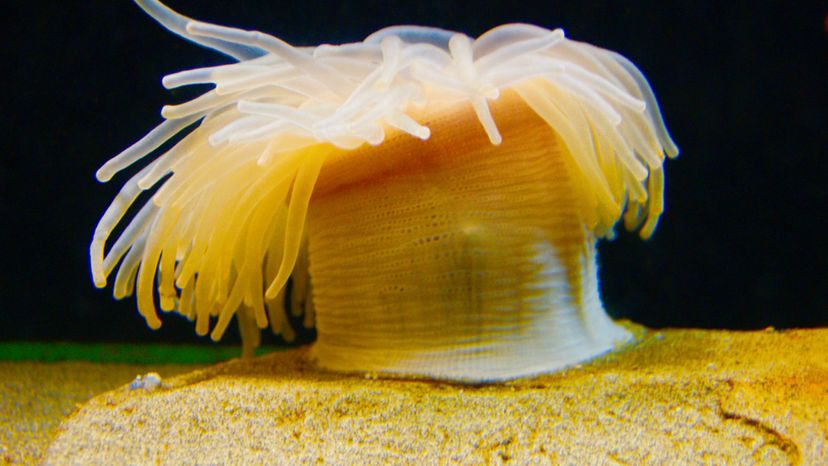
n/a
Which ocean-dwelling animal is this?
Dungeness crab
Horseshoe crab
Sea anemone
The sea anemone looks like a flower, but is actually made up of tentacles around a mouth. This carnivore has poisonous stingers on those tentacles, which it uses to harpoon its prey, paralyze it, and eat it.
Western sand dollar
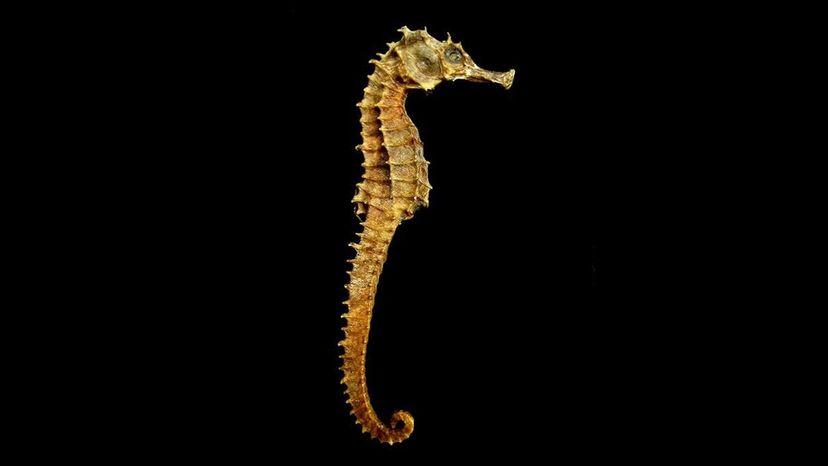
Wiki commons
Which ocean-dwelling animal is this?
Bull shark
Humboldt squid
Lobster
Seahorse
How adorable is this: seahorses prefer to swim in pairs, with their tails linked together, than solo. They're monogamous and mate for life, and are the only known animal where the male of the species bears the young.
Advertisement
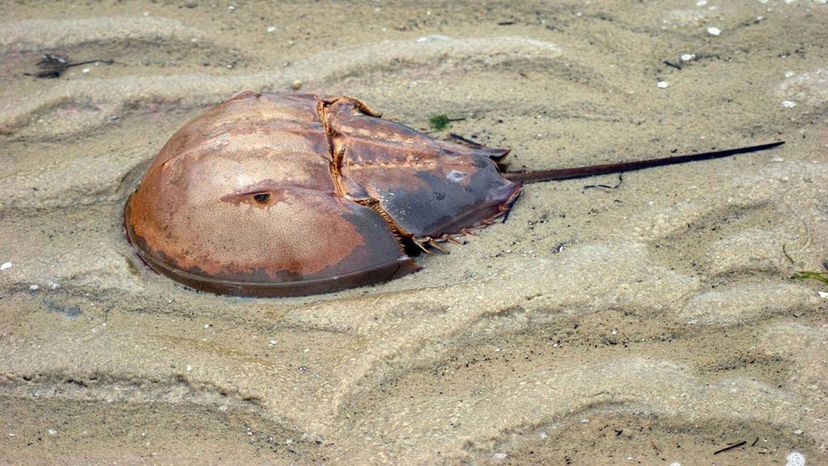
Wiki Commons Public Domain By: Perry Bill, U.S. Fish and Wildlife Service
Which ocean-dwelling animal is this?
Atlantic torpedo
Catfish
Crested bigscale
Horseshoe crab
Although they look as though they could skewer you, horseshoe crabs don't bite or sting. These "living fossils," as they're called, can be traced back to around 445 million years ago -- that's 200 million years before dinosaurs roamed the planet. They're not really crabs, though, and are more closely related to the arachnids group, which includes spiders and scorpions, than to crustaceans, such as lobsters and shrimp. The difference? Unlike the Dungeness crab and other "true" crabs, the horseshoe crab doesn't have antennae or mandibles (used for eating).
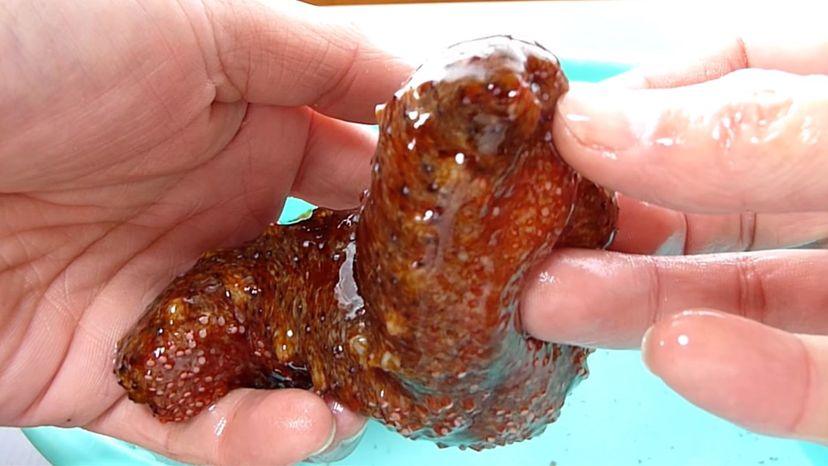
Youtube
Which ocean-dwelling animal is this?
Blue spiny lobster
Coral
Eel
Sea cucumber
The sea cucumber is a marine animal, not a type of vegetable. There are more than 1,200 types of these echinoderms, all found in salt water. Depending on the species, they may grow anywhere from about three-quarters of an inch to about 6 feet in length.
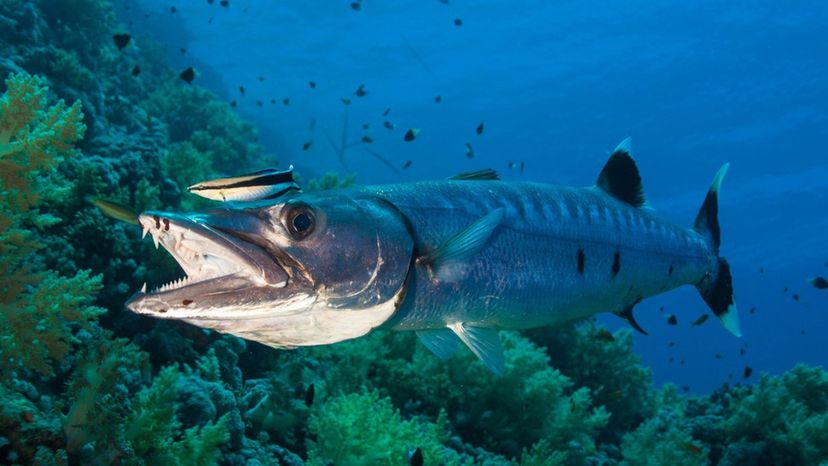
Shutterstock
Which ocean-dwelling animal is this?
Barracuda
Barracudas like warm, tropical waters, and often live near coral reefs or mangrove forests. They have streamlined bodies, and can swim up to 25 mph. Additionally, they have razor-sharp teeth, some of which are backwards, to prevent prey from sliding out.
Portuguese Man o' War
Sarcastic fringehead
Sea spider
Advertisement
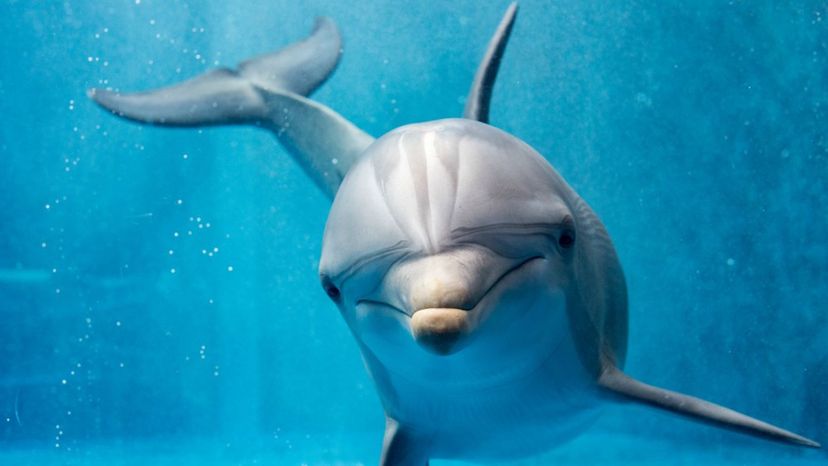
SHutterstock
Which ocean-dwelling animal is this?
Dolphin
Dolphins are known for their playfulness, and for being highly-intelligent marine mammals. And because dolphins are mammals, they have to come to the surface to breathe through their blowholes. Orcas, also called killer whales, are the largest member of the dolphin -- yes, dolphin -- family.
Polar bear
Sockeye salmon
Velvet crab
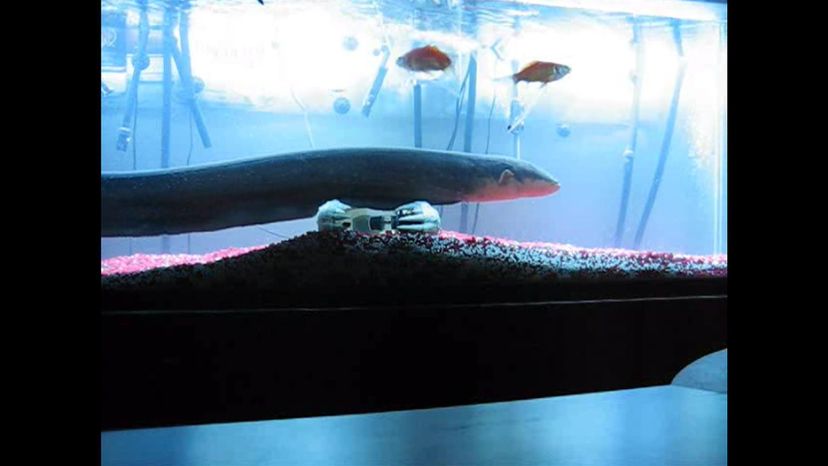
Youtube
Which ocean-dwelling animal is this?
Electric eel
They're not actually eels. Electric eels are fish, and members of the knifefish family. They're one of 500 types of fish that are able to generate electricity. They can produce a zap of more than 600 volts.
Harp seal
Sand dollar
Tassled wobbegong
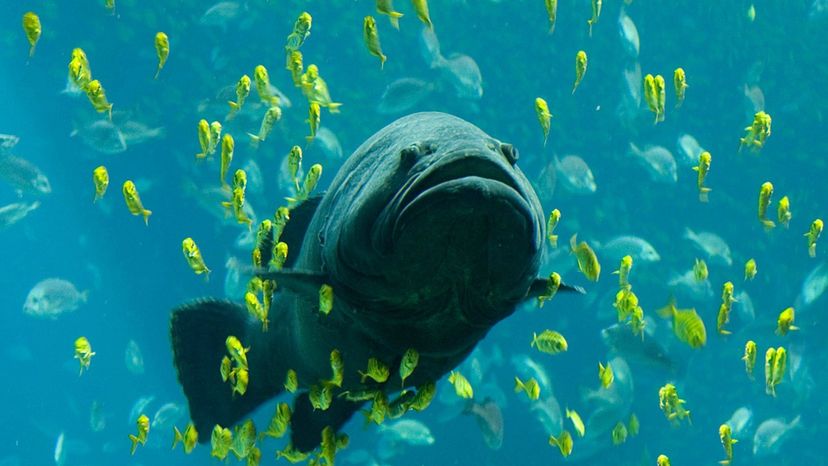
Wiki commons
Which ocean-dwelling animal is this?
Grouper
Grouper live in the Atlantic Ocean, found at depths of about 200 feet. Not very skilled swimmers, grouper are known to rely on ambushing their prey, and eating it whole.
Fangtooth fish
Platypus
Sea cow
Advertisement
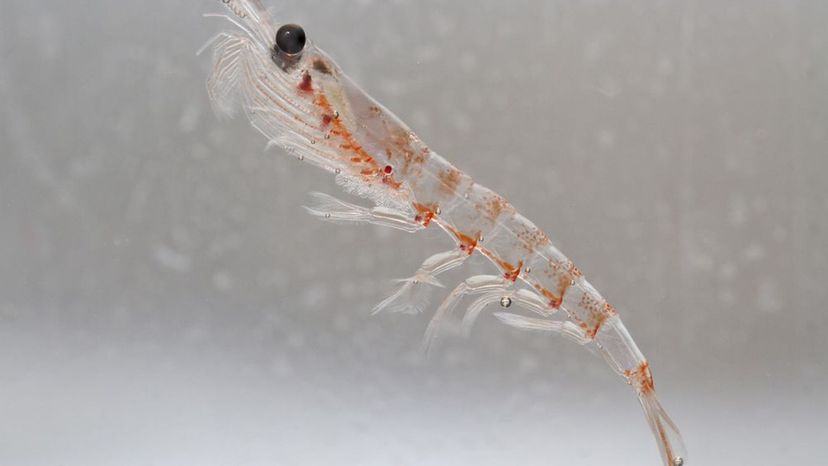
shutterstock
Which ocean-dwelling animal is this?
Herring
Krill
Krill are small crustaceans, no bigger than the size of your pinkie finger, that float in huge swarms in the ocean --- swarms that are big enough to be seen from space. Lots of marine animals like to eat krill, including certain fish, penguins, and the massive Baleen whales who dine on krill almost exclusively.
Sardines
Sturgeon

shutterstock
Which ocean-dwelling animal is this?
Mantis shrimp
Quahog
It's not just the name of the fictional Rhode Island hometown of the Griffin Family in the comedy, "Family Guy." A quahog is actually a hard-shell clam, found along the East Coast of North America down to the Yucatán Peninsula. These clams are edible and generally used in chowders and other cooked clam dishes.
Sea sponge
Walrus
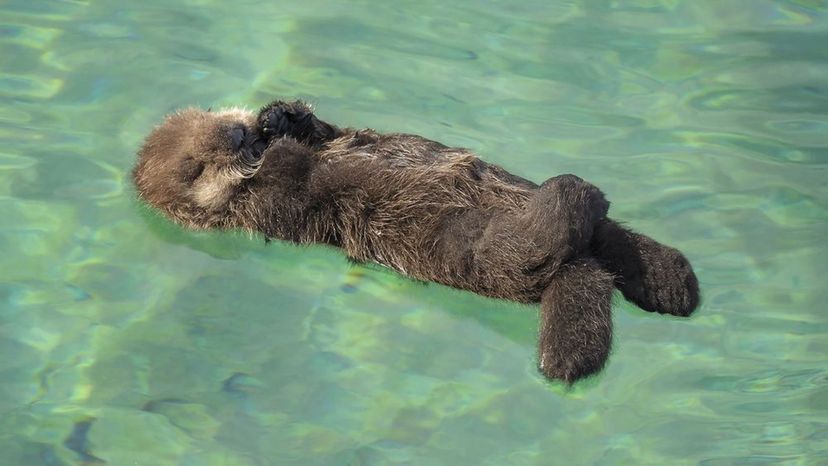
shutterstock
Which ocean-dwelling animal is this?
Otter
Unlike otters who live in freshwater habitats and live in underground dens, sea otters don't often come on land -- they don't have to. Instead, sea otters prefer living in forests of giant kelp. Sea otters are primarily in two locations, including the central California coast as well as the Pacific coasts of Alaska and Russia.
Penguin
Porpoise
Puffin
Advertisement
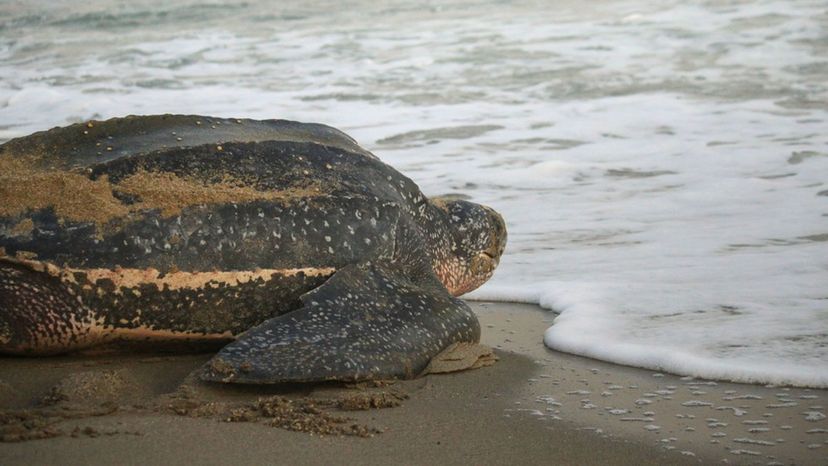
Shutterstock
Which ocean-dwelling animal is this?
Angler
Arctic char
Largemouth bass
Sea turtle
They've been around for at least 150 million years, according to fossil records. They look like any other turtle, but with flippers for water instead of legs for land. Sea turtles spend their entire lives at sea, with one exception: adult females do come ashore to lay eggs, which happens several times per season every few years.

Shutterstock
Which ocean-dwelling animal is this?
Albatross
Coral
Did you know nearly one-third of all ocean-dwelling fish live at least part of their lives on coral reefs? Reefs are made up of thousands of small organisms known as polyps that, together, form a coral colony. There are three types of coral reefs, including, barrier reefs, which protect shallow waters near the shore from the open ocean; fringing reefs, which are the most common; and atolls, which are often mistaken for islands.
Plankton
Smelts
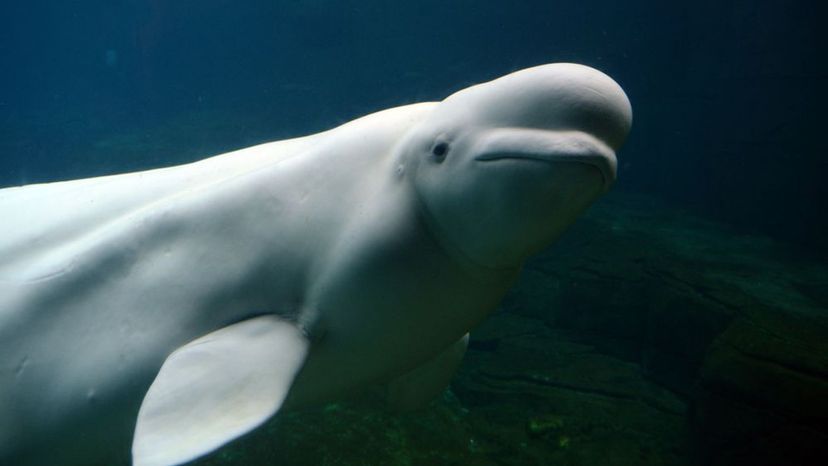
shutterstock
Which ocean-dwelling animal is this?
Beluga whale
Because of how vocal they can be, beluga whales have been nicknamed "sea canaries." They're able to dive to depths of more than 2,600 feet for up to 25 minutes -- plus, they're able to swim backwards.
Great white shark
Minnow
Squirrelfish
Advertisement

shutterstock
Which ocean-dwelling animal is this?
Hagfish
Chinook salmon
Chinook salmon, also known as king salmon, are the largest and rarest of the Pacific salmon. Their appearance changes when they are spawning in fresh water, turning color from silver with bluish-green backs to shades of olive and brown.
Starry pufferfish
Spiny dogfish
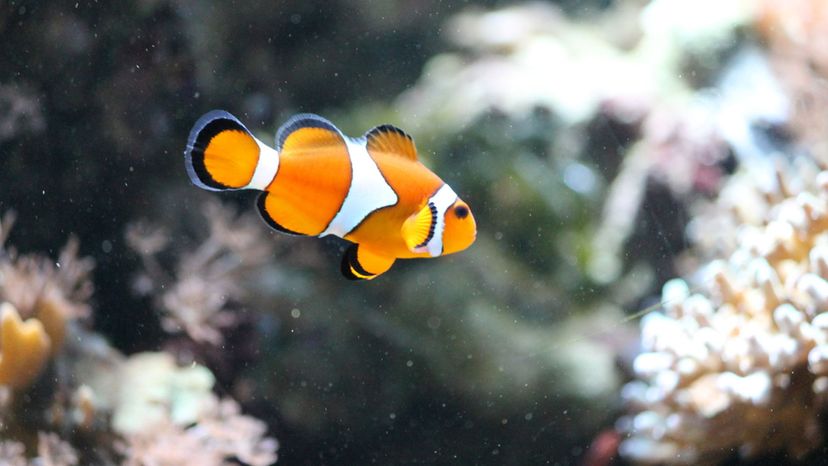
Shutterstock
Which ocean-dwelling animal is this?
Black drum
Clownfish
You may recognize this fish from the animated films, "Finding Nemo" and "Finding Dory." Ocellaris clownfish, also called anemonefish, make their home in sea anemones near coral reefs in the warm waters of the Pacific Ocean, the Australian Great Barrier Reef, the Indian Ocean, and the Red Sea.
Guitarfish
Trumpetfish

Shutterstock
Which ocean-dwelling animal is this?
Big-eye thresher
Blue whale
The heart of a blue whale can weigh as much as a car. Their tongues? As heavy as an elephant. It makes sense. Blue whales are the largest animal to have lived on Earth, that we know of, and can grow to weigh as much as 200 tons. In the wild, these whales typically live between 80 to 110 years -- but it's important to note that since there are only between 10,000 and 25,000 left in the world, they are an endangered species.
Carp
Swamp eel
Advertisement
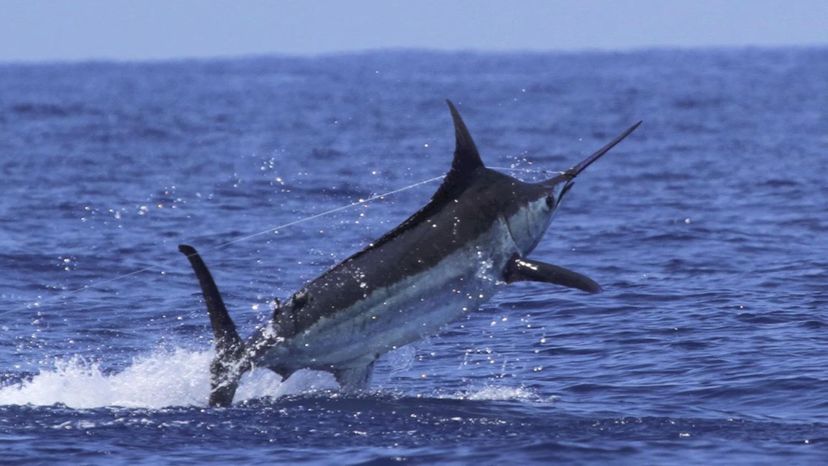
n/a
Which ocean-dwelling animal is this?
Angelshark
Blue marlin
Ernest Hemingway immortalized the blue marlin in a battle with a fisherman in the novel, "The Old Man and the Sea." It's one of the biggest fish in the world, with an easily-recognizable cobalt-blue color, and can be found in the more temperate waters of the Atlantic Ocean, the Pacific Ocean, and the Indian Ocean.
Freshwater butterflyfish
Frogfish

Youtube
Which ocean-dwelling animal is this?
Ahi tuna
Krill
Manatee
Vampire squid
They have black, webbed skin that resembles a vampire cape, and red eyes. Each of their eight arms is covered with two rows of spines, plus suckers. These vampire squid don't want to drink your blood -- or any blood, actually. They're detritivores, which means their diet consists of dead things, like decomposing plants and animals, and other organic waste.
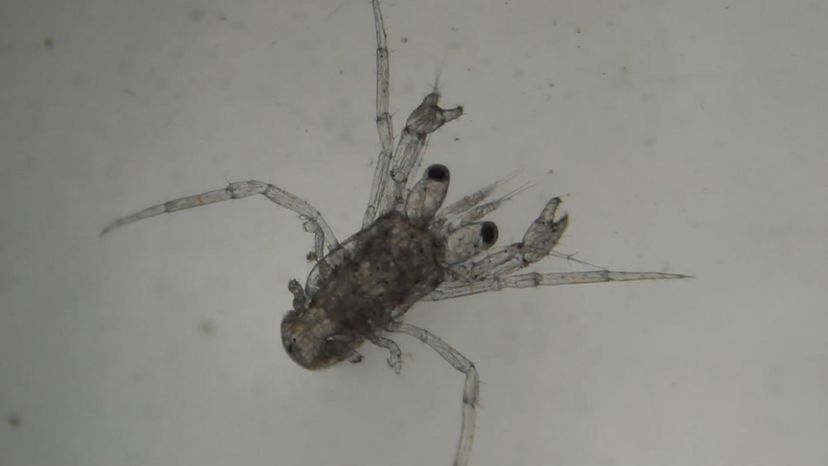
Youtube
Which ocean-dwelling animal is this?
Pink flabby whalefish
Pink flasher
Pink see-through fantasia
Zooplankton
Plankton is composed of two things, basically: phytoplankton and zooplankton. The community of phytoplankton is made up of microscopic algae, whereas the zooplankton are a different type, made up of thousands of different species of tiny animals. These drifting organisms are the bottom of the food chain, and are the diet of many ocean-dwelling animals.
Advertisement
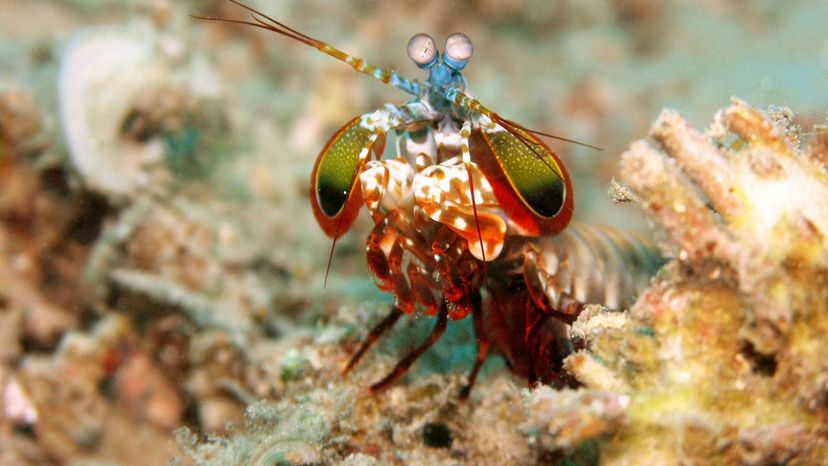
n/a
Which ocean-dwelling animal is this?
Bulbous dreamer
Leafy seadragon
Mantis shrimp
These creatures aren't mantises, nor are they shrimp. But that aside, the most incredible thing about the mantis shrimp is its punch. Just one hit has enough energy behind it to accelerate faster than a .22 caliber bullet -- and just one punch can deliver 160 pounds of force, which is enough to break through aquarium glass.
Stoplight loosejaw

shutterstock
Which ocean-dwelling animal is this?
Bluefin tuna
Artists dating back to the Stone Age captured the bluefin tuna in their art, with examples found on the walls of caves in Sicily. But "bluefin tuna" is actually used to describe four types of fish, including the Atlantic tuna, the Pacific tuna, the Longtail tuna, and the Southern tuna. Most will grow to be about 6 feet long and 550 pounds -- some are known to grow to nearly 10 feet long and 1,500 pounds.
Pelican eel
Piranha
Sea stickleback
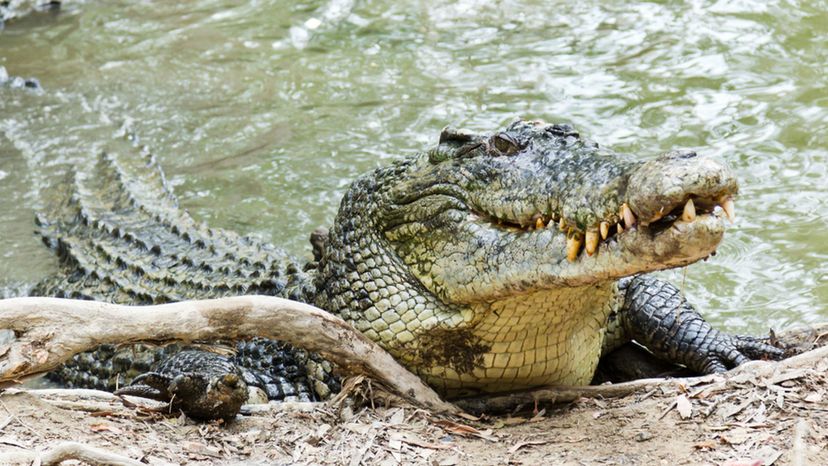
n/a
Which ocean-dwelling animal is this?
Flamingo tongue snail
Leatherback sea turtle
Saltwater crocodile
The saltwater crocodile, nicknamed "Saltie," is known to live for up to 70 years in the wild, and typically grows to be about 17 feet long and weighing about 1,000 pounds. It's the largest living reptile, and some grow much bigger. Of all animals, some believe Salties, lurking below the surface of the water, are the most likely to eat a human being -- yikes!
Sea lion
Advertisement
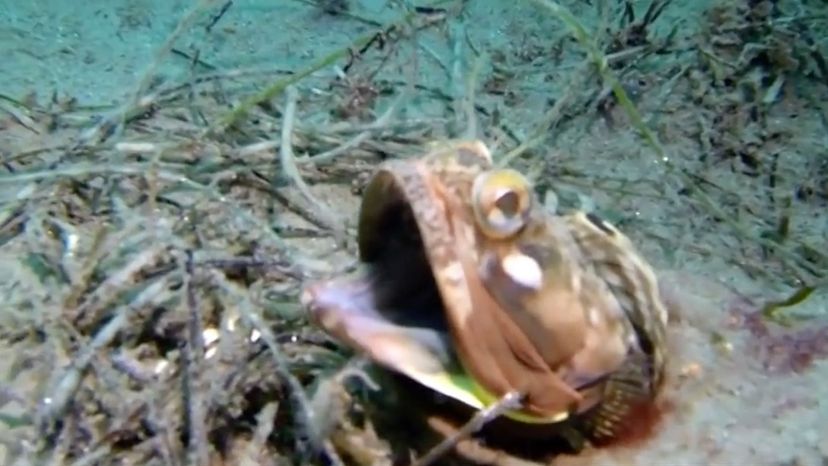
Youtube
Which ocean-dwelling animal is this?
Clownfish
Globster
Sarcastic fringehead
The sarcastic fringehead fish is called a "tube benny" -- and that means they make their homes in burrows that have been created by other animals. They're aggressive and fearless ambush predators with needle-like teeth, and are known to attack pretty much everyone and everything that passes by.
Sea anemone
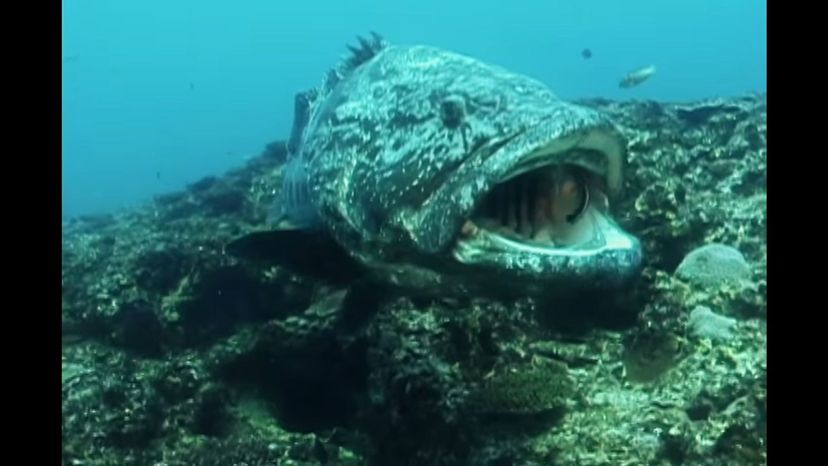
Youtube
Which ocean-dwelling animal is this?
Cleaner wrasse
There are a few different kinds of cleaner wrasses, but they all have one main thing in common: they clean other fish. These fish set up what are known as "cleaning stations," where they greet their "clients" (other fish) and "clean" (eat) the parasites and dead cells on that fish's skin.
Angler Fish
Mahi-mahi
Coho Salmon
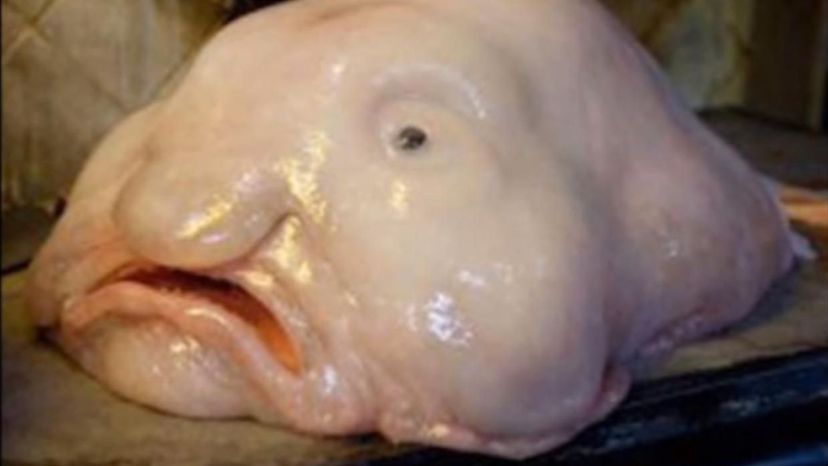
n/a
Which ocean-dwelling animal is this?
Blobfish
It doesn't have bones or teeth, and it has an extremely low muscle mass. Basically, the blobfish's job is to be a blob. At the deep depths of the ocean where it prefers to live, though -- between 2,000 to 4,000 feet beneath the surface of the water -- the water pressure provides structural support for its body, and it spends its days eating what floats into its open mouth.
Flying fish
Giant clam
Manta ray
Advertisement
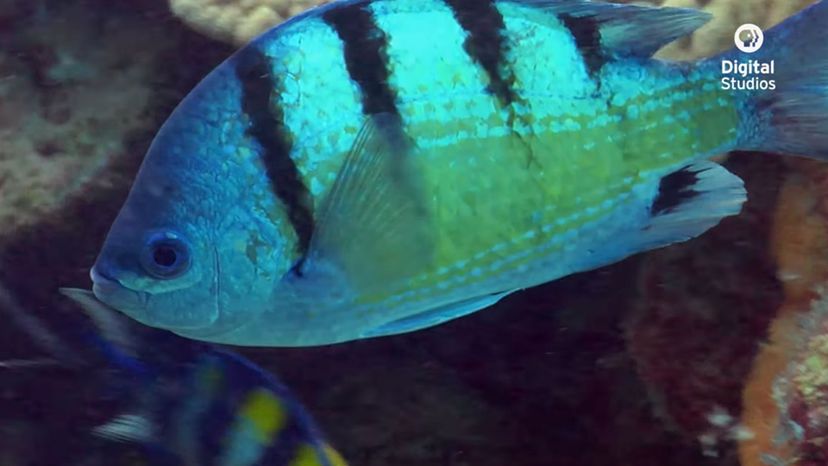
Youtube
Which ocean-dwelling animal is this?
Sea bass
Damselfish
Although a few types of damselfish live in freshwater rivers, you'll usually find these brightly-colored fish in the ocean (including off the coast of southern California). They live in tropical coral reefs and feed on plankton and algae. They're also popular among those who keep marine aquariums.
Mahi-Mahi
Bluefin tuna
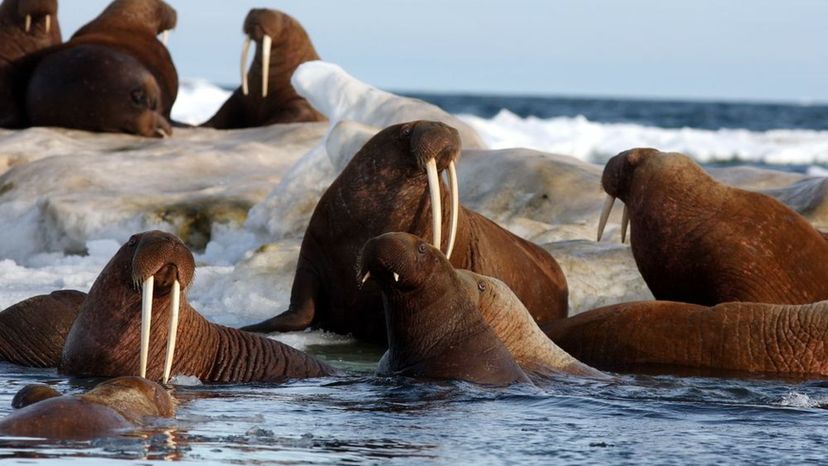
shutterstock
Which ocean-dwelling animal is this?
Dugong
Pancake tortoise
Prawn
Walrus
These flippered animals are marine mammals with prominent tusks, whiskers, and six inches of blubber protecting them, just below their skin. Among walruses, size does matter. When it comes to tusks, the bigger they are, typically the more power and social status that walrus will have.

Youtube
Which ocean-dwelling animal is this?
Fangtooth fish
With its disproportionately large teeth, the fangtooth fish looks as though it may have swum straight out of a horror movie. But this 6-inch fish, also called an ogrefish, isn't from the art department -- it's from the deepest waters of the ocean.
Kissing gourami
Orange-spine unicorn fish
Poll's upside-down catfish
Advertisement
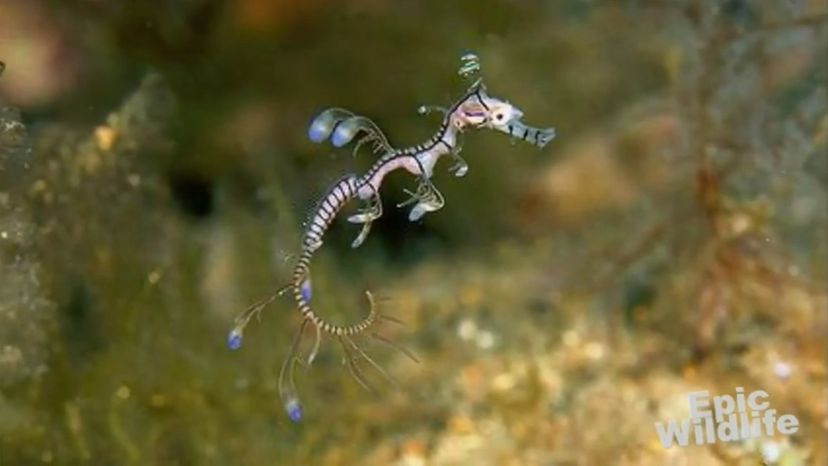
Youtube
Which ocean-dwelling animal is this?
Leafy seadragon
Leafy seadragons can grow to almost 14 inches, and it's their ornate camouflage that may be the coolest thing about them -- they look as though they're just another piece of seaweed floating in the water. "Leafies," as they're called, are found only off the southern and western coasts of Australia.
Needlefish
Nibblefish
Noodlefish
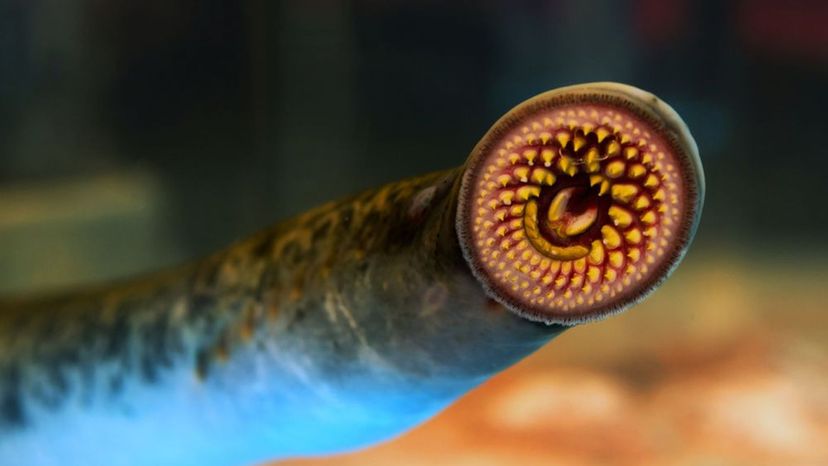
Shutterstock
Which ocean-dwelling animal is this?
Jeweled umbrella squid
Lamprey
Sometimes, and incorrectly, they're called lamprey eels because these jawless fish do look a little like eels -- but it's only superficial. Lampreys have lived, unchanged, on our planet for something like 360 million years. There are three types, known as the blood-suckers, the flesh-eaters, and a third type that actually only mates and dies as an adult.
Mustache triggerfish
Painted glass fish
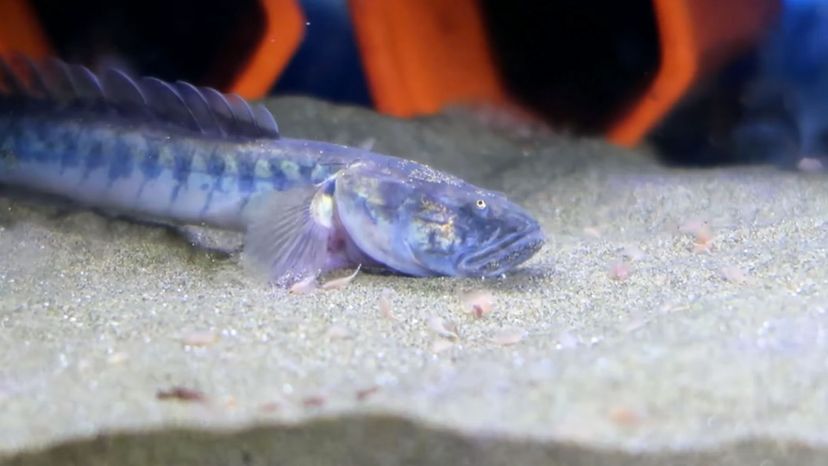
Youtube
Which ocean-dwelling animal is this?
Combtooth blenny
Dragonfish
The dragonfish is a deep-sea fish, and lives in the deepest, darkest parts of the Atlantic Ocean. Because they live at such deep depths, no plant life is available for their diet, and dragonfish prey on other marine fish. Like a lot of other deep-sea creatures, the dragonfish is able to produce light -- but these scaleless fish go above and beyond with both blue or red light.
Sea nettles
Squidworm
Advertisement
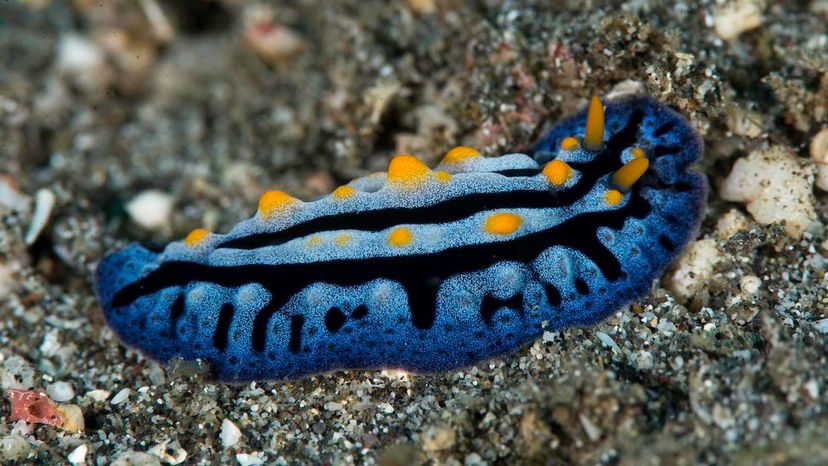
Wiki commons
Which ocean-dwelling animal is this?
Jellyfish
King crab
Nudibranch
Nudibranchs are colorful, jelly-bodied, shell-less mollusks that live along the ocean floor, off the coast of Australia. There are a few thousand types of these sea slugs, and depending on which species it is, nudibranchs can grow anywhere from about one-quarter of an inch to as big as one foot long.
Frogfish

Youtube
Which ocean-dwelling animal is this?
Albino marmalade cat
The Albino Marmalade Cat, also known as the Ice Blue Zebra, is a freshwater fish. Although it has become an aquarium-dweller, it's endemic to Malawi, found in schools around rocky areas of Lake Malawi.
Red snapper
Black cod
Blue tang
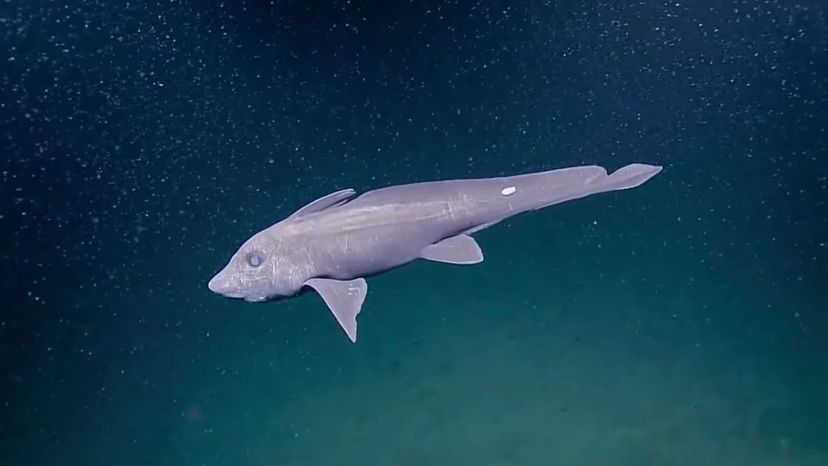
Youtube
Which ocean-dwelling animal is this?
Chimaera
The chimaera (not to be confused with the Chimera, a fire-breathing monster in Greek mythology) is found mostly in deep ocean. These fish are distantly related to sharks, and, like sharks, have cartilage skeletons.
Colossal squid
Giant siphonophore
Lion's mane jellyfish
Advertisement
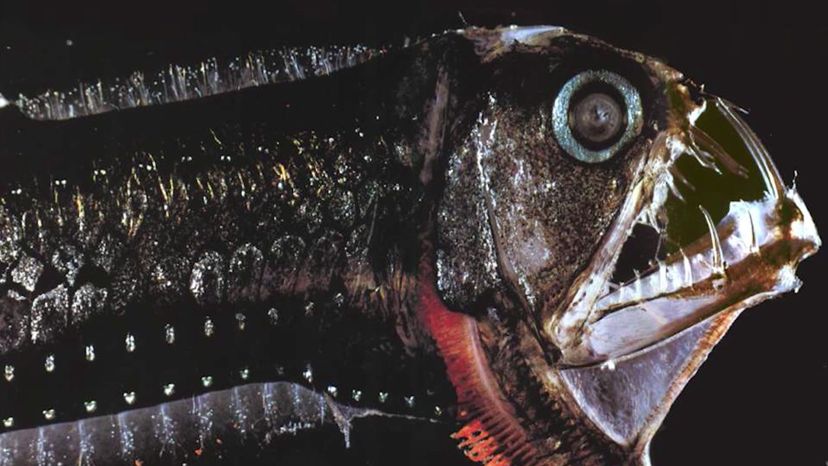
Youtube
Which ocean-dwelling animal is this?
Pacific cod
Pacific fat sleeper goby
Pacific trout
Pacific viperfish
The viperfish is a small, and very unusual-looking, deep-sea predator. Like many other deep-dwellers, viperfish have several photophores (these are organs that emit light) on their bodies, including a photophore that dangles at the end of their dorsal spine -- like a lure on a fishing pole used to attract prey.

youtube
Which ocean-dwelling animal is this?
Egyptian mouthbrooder
Goblin shark
Because its lineage can be traced as far back as 125 million years ago, the goblin shark is considered a "living fossil" among sea creatures. This pink-skinned, deep-sea shark typically grows to be between 5 feet and 12 feet in length, and has a distinguishing flat snout and protruding mouth.
Japanese spider crab
Wimple

YouTube
Which ocean-dwelling animal is this?
Anglerfish
The females of this deep-sea fish have a glowing-blue lure dangling from their heads, and large mouths full of sharp teeth. The males, who are much smaller, are found permanently fused to the sides of the females -- like a parasite (it's actually called sexual parasitism), whose job it is to release sperm.
Atlantic footballfish
Devil fish
Sleeper goby
Advertisement

Youtube
Which ocean-dwelling animal is this?
Bluefin tuna
Snaggletooth
The snaggletooth is a type of weasel shark, and may be familiar because its fins have long been used in the traditional Chinese shark fin soup. It's known to eat a variety of prey, from rays and cephalopods to bony fish and other sharks.
Anglerfish
Swordfish
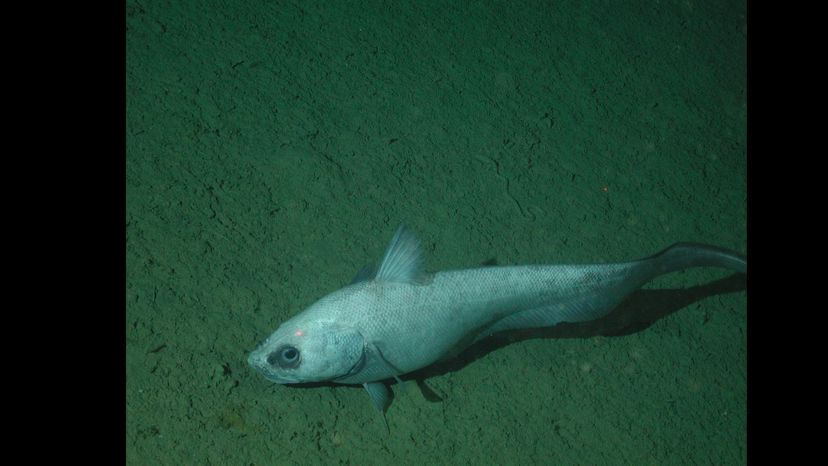
Wiki Commons Public Domain
Which ocean-dwelling animal is this?
Grenadier
Grenadiers, also known as "rattails" because of their appearance, are deep-sea fish that populate the depths of the oceans from the Arctic to the Antarctic -- and they're abundant, too, accounting for an estimated 15 percent of all deep-sea fish. In fact, fishermen off the coast of Alaska consider the fish to be "trash fish," unintentionally picked up while they fish for other types, such as sablefish or cod.
Headstander
Horned blenny
Southern Dolly Varden
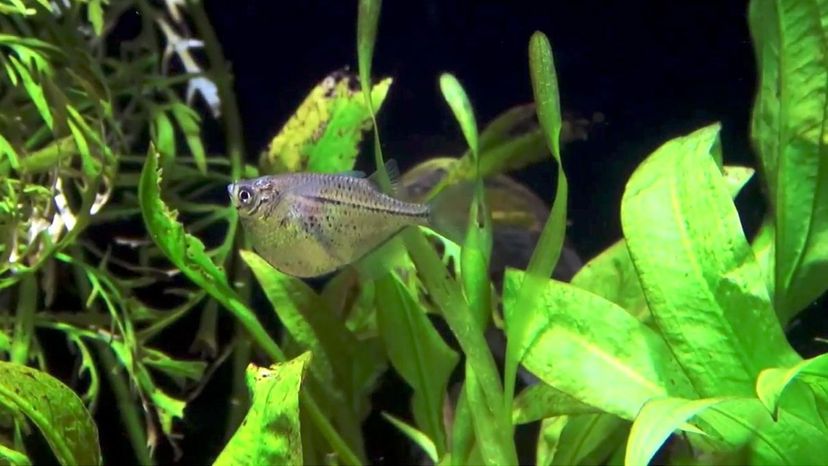
n/a
Which ocean-dwelling animal is this?
Hatchetfish
Hatchetfish are deep-sea fish found in the waters near Central and South America. These light-producing fish spend most of their day hanging out or hiding on the bottom of the ocean, waiting for their next meal to swim by unsuspectingly.
Head-and-taillight tetra
Malawi eye-biter
Short-finned Molly
Advertisement
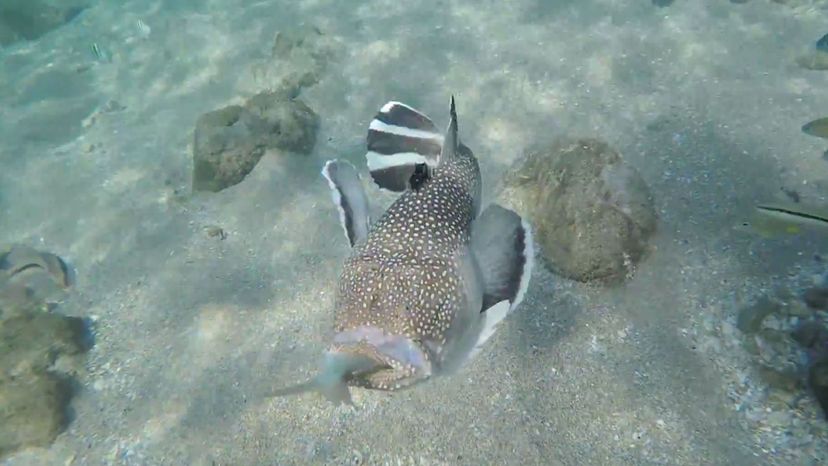
Youtube
Which ocean-dwelling animal is this?
Dwarf-lantern shark
Stargazer
There are four types of stargazers, the Northern, Southern, Speckled, and Masked. The species can be found in the U.S. and Canada, as well as in Fiji, Indonesia, Tonga, and in the Red Sea. Stargazers have poisonous spines to use against their prey, as well as the ability to deliver electric shocks of up to 50 volts from their eye muscles. They spend most of the time buried in the sand, waiting for an unsuspecting animal to get too close.
Yellow Regal Peacock Cichlid
Yo-yo loach

Youtube
Which ocean-dwelling animal is this?
Sea angel
Globster
A "globster" is an unidentified mass of organic material -- basically, it's a decomposing carcass that's washed ashore, but no one can tell what it is. Sometimes the globster is identified, such as the "Newfoundland Blob" which was found, by DNA testing, to actually be a much-decomposed piece of a sperm whale carcass.
Sea pickle
Sea toad
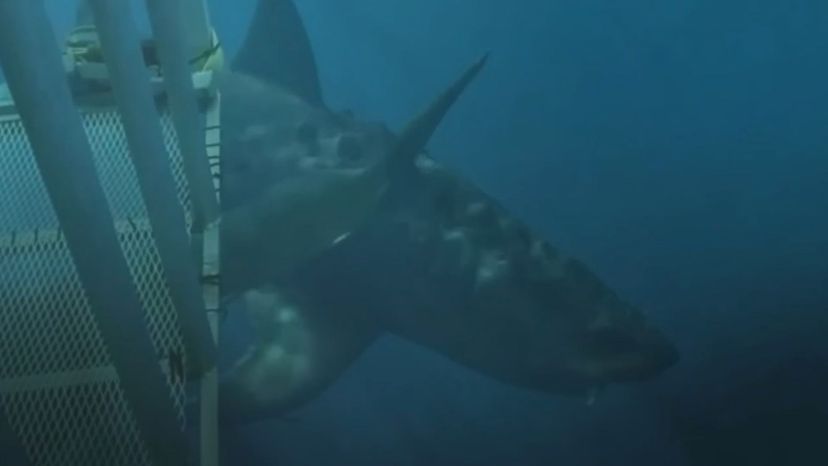
Youtube
Which ocean-dwelling animal is this?
Megalodon
Now extinct, "Megalodon" means "big tooth," and refers to an extinct enormous shark species swimming the world's oceans from around 28 million years ago until roughly two million years ago (their species disappeared during the Pleistocene extinction). These sharks, the largest ever to exist, could grow up to 60 feet long. And as a predator, it's believed their bite would have been more powerful than the bite of a Tyrannosaurus rex.
Neon tetra
Oranda goldfish
Siamese fighting fish
Advertisement
You Got:
/48
Youtube